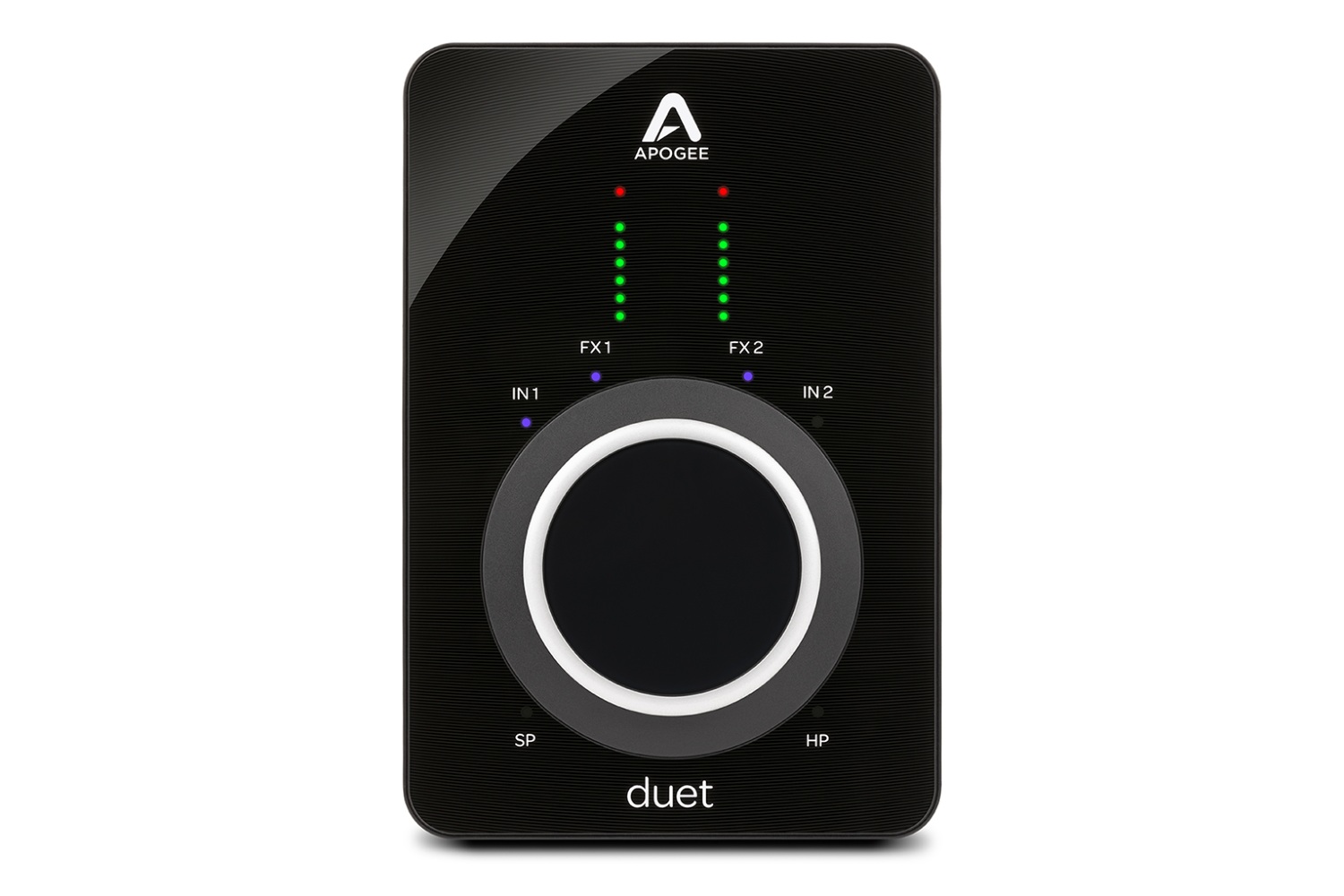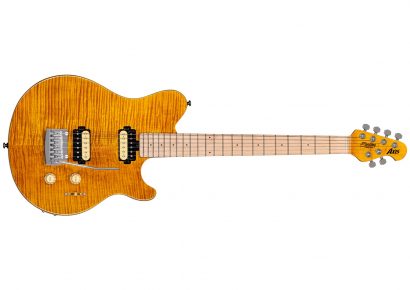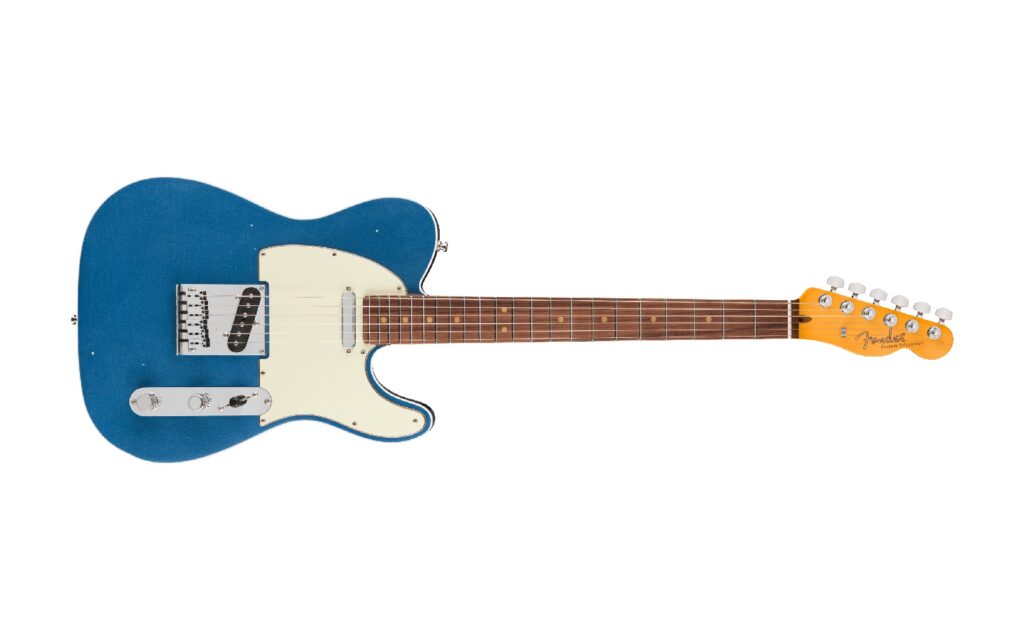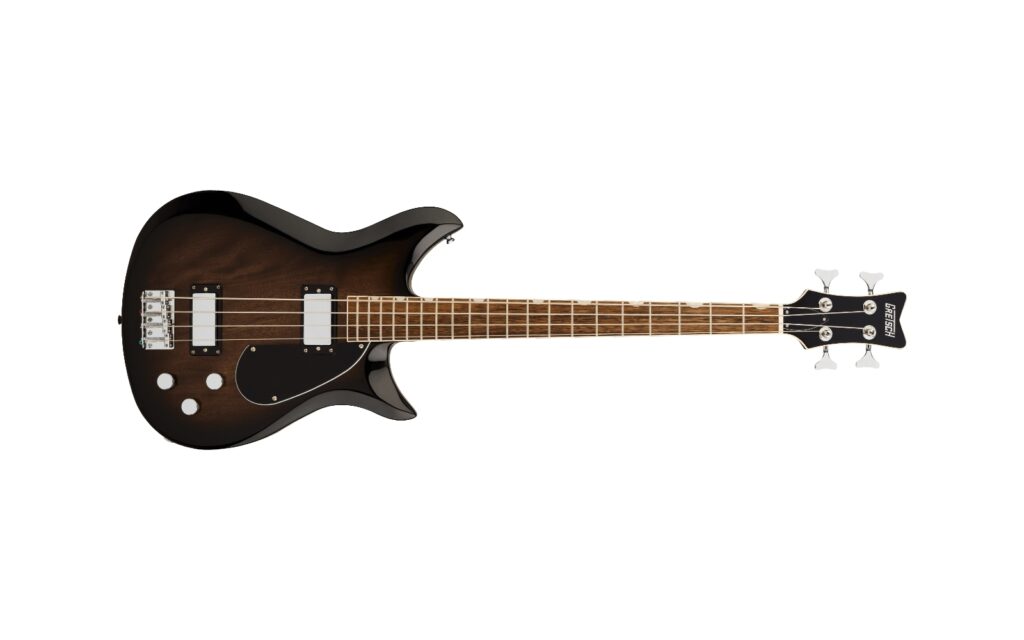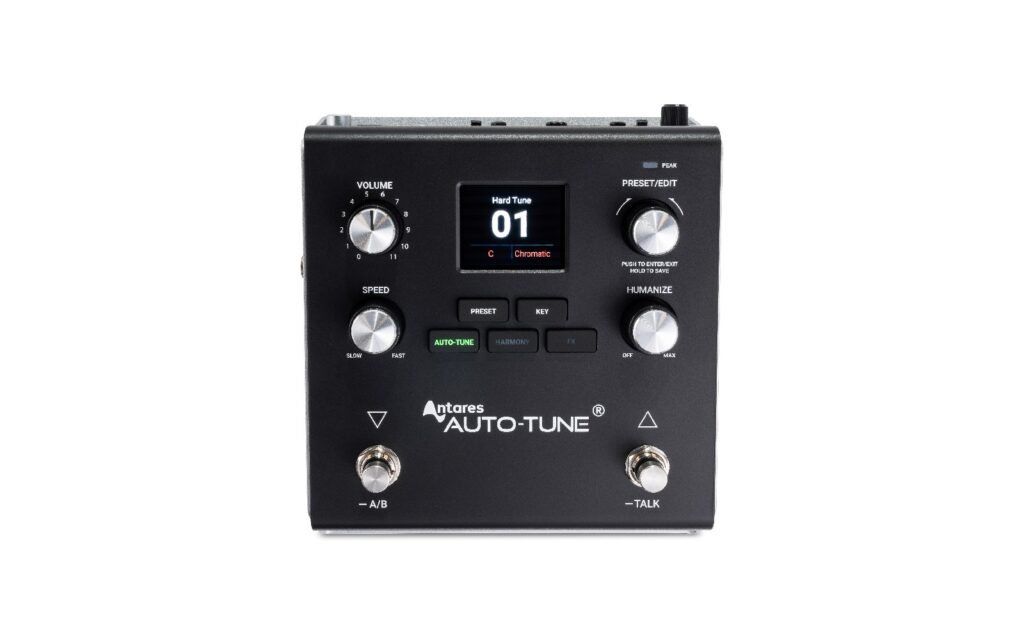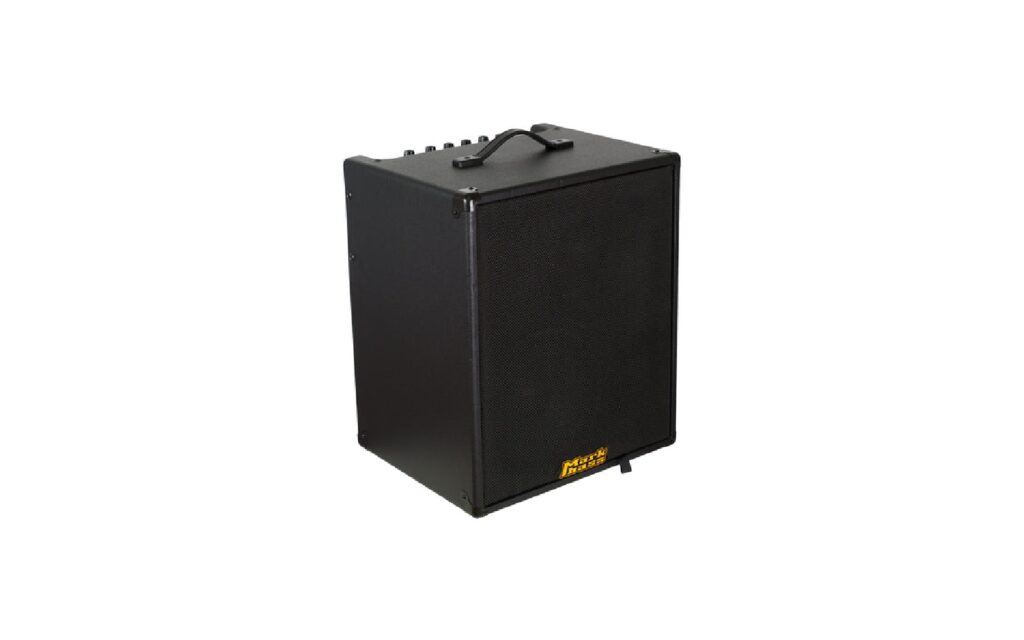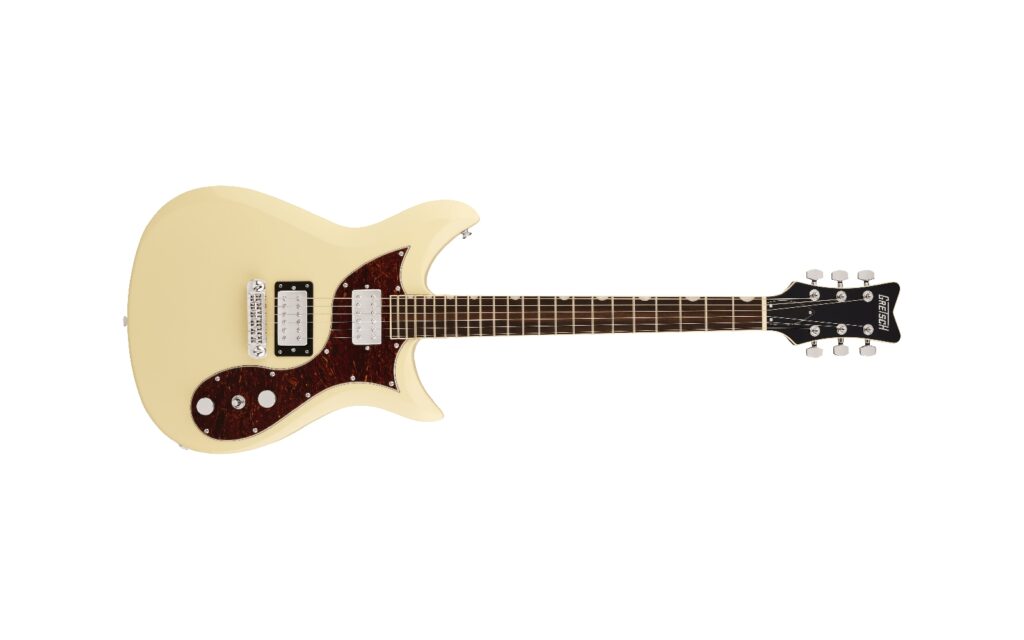Link Audio | Enquire for pricing
Apogee are market leaders in converting analogue signal to digital and back again. Their range of Apogee Duet, Ensemble, Element, and Symphony interfaces are not only used world wide, but they’re used by professionals and amateurs alike. They range from 2-input Duets to 32-inputs and outputs for larger analogue systems and studios. What they share, however, is Apogee’s forward-thinking and professional design, as well as features that make your workflow easy. They allow the work to continue and keep momentum flowing, and that’s the ideal function of interfaces or solely converters.
Read more product reviews here.
The Apogee Duet 3 2×4 USB Audio Interface is Apogee’s latest offering, a 2-in, 4-out audio interface for Mac and Windows. Designed to be easy to use on the go, the Duet is a powerful interface to have handy for world-class playback as well as crystal-clear pre-amps and clear, and accurate metering options. Apogee’s growing collection of products focused on a professional working environment speak volumes of their reliability, crystal-clear sound and company values, and the Apogee Duet 3 2×4 USB Audio Interface is a great entry into this world. It can be integrated into an existing set up or used as your only ticket from the analogue into the digital realm and back again.
In use, the Apogee Duet 3 is up and running very, very quickly indeed and is literally plug and play. A lot of modern products claim to be plug and play, but usually take a little bit of work, such as plug, download, install, restart, then play. Audio playback from the Duet 3 is clear and full range, and the clear metering on the unit’s scratch-resistant screen is accurate and handy to help you keep incoming and outgoing levels under control.
The pre-amps are transparent and honest sounding, designed for any colour, grit or noise to be added to a stellar signal after the fact rather than on the way in. For external pre-amp users, the breakout cable features line-in options. The headphone output is a 3.5mm connector, and again is crystal clear and very full range. All of these ins and outs are controlled by the large backlit knob which allows you to precisely set input gain, as well as speaker output (or any output!), and headphone level by softly depressing the knob to toggle between them. The Apogee Duet 3 interfaces with Apogee’s Control 2 software and allows you to use the onboard DSP processing/plugins while you record with little or no discernable latency.
On paper, the Apogee Duet 3 is a USB interface with two inputs and four outputs via the handy (included) breakout cable. The Duet 3 also features a travel case and USB cable to get you working immediately. It features onboard DSP processing to run Apogee’s Symphony ECS Channel Strip – Hardware DSP FX plug-in (tuned by Bob Clearmountain, husband of Apogee’s CEO Betty Bennett and mix engineer for up-and-comers The Rolling Stones, Bon Jovi, and The Church).
Available separately is the Duet Dock that serves as an I/O for mics and outputs as well as a little stand to angle the Duet 3 slightly for comfort. You can record at a maximum of 24-bit and 192kHz, and the unit is bus powered so there’s no need for unsightly power cables. Both pre-amps have independent phantom power, phase switch, and gain controls, but these can also be linked in the Control 2 software for stereo recording. It’s compatible with macOS and Windows 10, and features on board DSP processing for ultra low-latency recording.
All in all, the Duet 3 takes everything we’ve loved about Apogee’s long line of stellar AD/DA conversion and packages it into an even more usable package than the original Duet or Duet 2. It includes everything you need to get working, and even a handy travel case to keep your Duet 3 safe while travelling or on the road.
Apogee are professionals, and they make products for professionals, so they address the wants, needs, and requirements of professional sessions to make sure you’re ready to capture whatever an artist, be that clients or yourself, may be ready to put down. You can record at up to 192kHz and 24-bit, so high-fidelity recordings are not an issue, and you can monitor yourself with low latency, even when using some plugins. Unlike some smaller interfaces with coupled controls such as phase switch or phantom power, the Duet 3 features two completely independent pre-amps, controllable either from the unit’s sleek face or within Apogee’s Control 2 software.
Apogee are an underdog of pro audio but they’re quietly found in an increasing number of top-tier studios for their unparalleled audio conversion. Some companies use glitz, glamour, marketing and crafty hardware ecosystems to lock in, while Apogee need only rely on their stellar products, their long history or professional-grade releases and the trust that working professionals put into them every day. Some equipment may fail, tubes may blow and drumsticks may clip microphones, but you can rest assured that if you own a Duet, it will not let you down.
For more information, head to Apogee’s website. For local enquiries, reach out to Link Audio.
